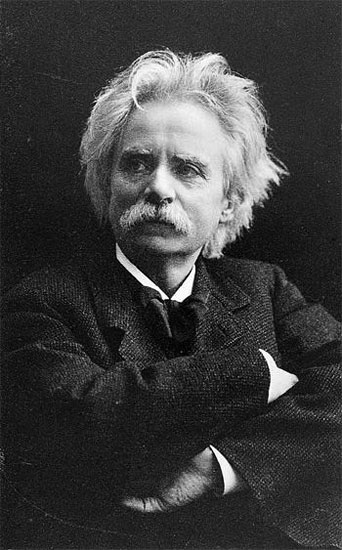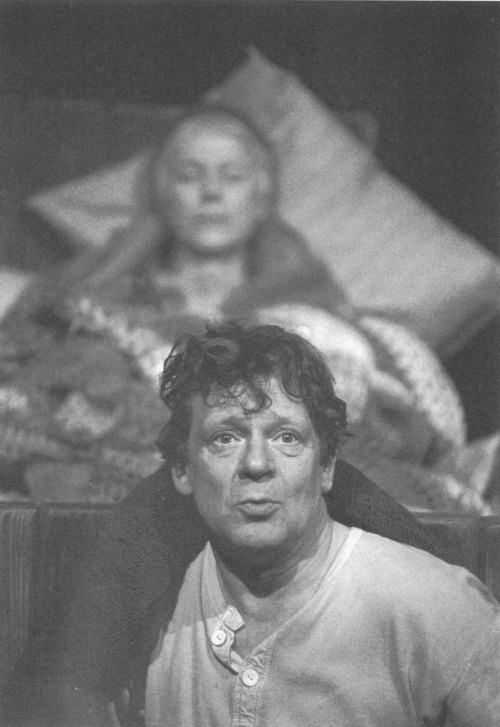
 Sir Duke |
 Edvard Grieg |
|
Story by Brad Walseth  The streets of Harlem crossed the Norwegian fjords Monday night at Symphony Center when the Chicago Sinfonietta, under the perceptive direction of Paul Freeman, along with Jon Faddis’ Chicago Jazz Ensemble combined to present an intriguing mix of European and African American styles, and the Chicago audience was the beneficiary.
The streets of Harlem crossed the Norwegian fjords Monday night at Symphony Center when the Chicago Sinfonietta, under the perceptive direction of Paul Freeman, along with Jon Faddis’ Chicago Jazz Ensemble combined to present an intriguing mix of European and African American styles, and the Chicago audience was the beneficiary.  The first half of the program was given over to two different approaches to Edvard Grieg’s program music composed for Henrik Ibsen’s darkly-penetrating, yet beloved stage play, “Peer Gynt.” Performing the traditional version first, the Chicago Sinfonietta evoked visions of reindeer, trolls and Arabian nights with their well-played presentation. I was especially pleased by the hushed quietude Freeman coaxed from his players during the “dancing” phase of Solvejg’s Song,” a dynamic often missed by less sensitive readings, where the boisterous blunderings spoil the sublimely heart-rending and bittersweet spell.
The first half of the program was given over to two different approaches to Edvard Grieg’s program music composed for Henrik Ibsen’s darkly-penetrating, yet beloved stage play, “Peer Gynt.” Performing the traditional version first, the Chicago Sinfonietta evoked visions of reindeer, trolls and Arabian nights with their well-played presentation. I was especially pleased by the hushed quietude Freeman coaxed from his players during the “dancing” phase of Solvejg’s Song,” a dynamic often missed by less sensitive readings, where the boisterous blunderings spoil the sublimely heart-rending and bittersweet spell.
 Leaving the snow covered mountain passes behind, Faddis and his hot group took us to the corner of Lenox Ave. and W. 125th Street in Harlem, as the CJE played Duke Ellington and Billy Strayhorn’s jazz version of the Peer Gynt Suite. As delicious as this marriage of styles sounds on paper, it sounded even better in person.
Leaving the snow covered mountain passes behind, Faddis and his hot group took us to the corner of Lenox Ave. and W. 125th Street in Harlem, as the CJE played Duke Ellington and Billy Strayhorn’s jazz version of the Peer Gynt Suite. As delicious as this marriage of styles sounds on paper, it sounded even better in person. Successfully converting the aforementioned “Solvejg’s Song” to a Basin Street Blues, adding African rhythms to Ingrid’s Lament,” treating “Ase’s Death” as a New Orleans funeral dirge and “Anitra’s Dance” as a Cotton Club dance contest, Ellington and Strayhorn showed what marvelous arrangements they could make out of music with strong thematic material from the Western European canon, while adding new punch and sparkles from the Jazz approach. Solo turns from Pat Malinger on tenor, Ted Hogarth on bari, and Audrey Morrison on her sassy muted trombone, among others, were charming, while drummer Dana Hall was the optimal time-keeper. Hearing the thundering ensemble take on “in the Hall of the Mountain King,” one had to be impressed: who knew Edvard Grieg could swing? Successfully converting the aforementioned “Solvejg’s Song” to a Basin Street Blues, adding African rhythms to Ingrid’s Lament,” treating “Ase’s Death” as a New Orleans funeral dirge and “Anitra’s Dance” as a Cotton Club dance contest, Ellington and Strayhorn showed what marvelous arrangements they could make out of music with strong thematic material from the Western European canon, while adding new punch and sparkles from the Jazz approach. Solo turns from Pat Malinger on tenor, Ted Hogarth on bari, and Audrey Morrison on her sassy muted trombone, among others, were charming, while drummer Dana Hall was the optimal time-keeper. Hearing the thundering ensemble take on “in the Hall of the Mountain King,” one had to be impressed: who knew Edvard Grieg could swing? Intermission led into a delightful concerto for timpani and orchestra by Russell Peck, with Robert Everson featured on this instrument, which is usually buried in the back, content to play a supportive, yet explosive role. Everson’s role on this night was anything but, as he actively tuned drums, switched mallets, all while playing his set of kettledrums almost like a standard drum kit. Admirable not only for his stamina, Everson showed an exceptional command of timing and timbres in his solo spotlight.  Ending the evening, the Sinfonietta and CJE combined to create Duke Ellington’s incredible “Harlem.” This piece, meant to take the listener on a musical journey through that famous New York neighborhood was a sheer delight, and brought to mind Gershwin’s more famous “An American in Paris,” but with plenty of Duke twists. An eye-opener for those who only think of “A-Train” or “Caravan” when thinking of Ellington, this occasion afforded a wonderful opportunity to hear lesser-known works of a still underappreciated musical genius, performed by musicians of great skill who voice their appreciation through their inspired playing.
Ending the evening, the Sinfonietta and CJE combined to create Duke Ellington’s incredible “Harlem.” This piece, meant to take the listener on a musical journey through that famous New York neighborhood was a sheer delight, and brought to mind Gershwin’s more famous “An American in Paris,” but with plenty of Duke twists. An eye-opener for those who only think of “A-Train” or “Caravan” when thinking of Ellington, this occasion afforded a wonderful opportunity to hear lesser-known works of a still underappreciated musical genius, performed by musicians of great skill who voice their appreciation through their inspired playing.
|
 Maestro Paul Freeman Maestro Paul Freeman |

|
 |
Check out other recent concerts reviews and photos Contact Brad Walseth and JazzChicago.net at bwalseth60@aol.com